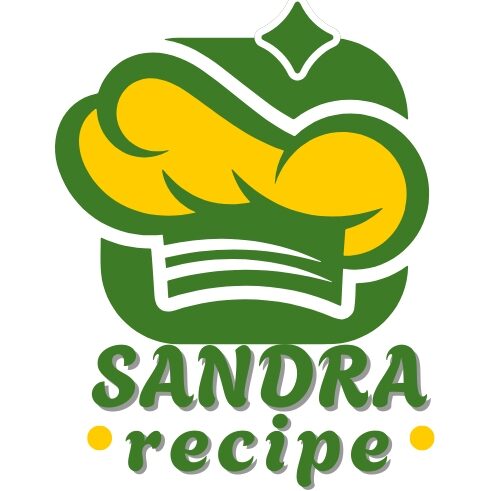This vibrant Thai-inspired curry transforms tender patty pan squash into a fragrant, coconut-based dish rich with fresh herbs, spices, and vegetables.
FULL RECIPE
Ingredients
- 3 cups patty pan squash, cut into bite-sized pieces
- 1 red bell pepper, sliced
- 1 small onion, sliced
- 1 cup coconut milk
- 1 cup vegetable broth
- 2 tablespoons red curry paste
- 1 tablespoon soy sauce
- 1 tablespoon brown sugar
- 2 teaspoons fresh ginger, grated
- 2 cloves garlic, minced
- 1 tablespoon vegetable oil
- 1 teaspoon lime juice
- Fresh basil or cilantro, for garnish
- Cooked jasmine rice, for serving
Directions
- Heat vegetable oil in a large pan over medium heat. Add onion, garlic, and ginger; sauté until softened and fragrant, about 2–3 minutes.
- Stir in red curry paste and cook for another minute to release its aroma.
- Add patty pan squash and red bell pepper. Stir to coat with the curry mixture.
- Pour in coconut milk and vegetable broth; bring to a gentle boil.
- Reduce heat and simmer for 10–12 minutes, until vegetables are tender.
- Stir in soy sauce, brown sugar, and lime juice. Cook for another minute.
- Remove from heat. Garnish with fresh basil or cilantro and serve over jasmine rice.
Nutrition Facts
- Calories: 280 kcal per serving
- Protein: 4 g
- Carbohydrates: 28 g
- Dietary Fiber: 5 g
- Sugars: 10 g
- Fat: 18 g
- Saturated Fat: 12 g
- Sodium: 520 mg
Flavor Profile of Thai-Style Patty Pan Squash Curry
The Thai-Style Patty Pan Squash Curry offers a complex yet harmonious flavor profile that balances creamy coconut milk with the spicy heat of red curry paste. The natural sweetness and mild nuttiness of patty pan squash complement the aromatic ginger and garlic, while hints of lime juice add brightness and acidity. The subtle saltiness from soy sauce and a touch of brown sugar bring depth to the curry, making every bite rich and satisfying without overwhelming the palate.
Nutritional Benefits of Patty Pan Squash
Patty pan squash is a nutrient-dense vegetable low in calories and rich in vitamins and minerals, making it a healthy addition to any diet. It provides a good source of vitamin C, which supports immune function, and vitamin A, essential for eye health. Its high fiber content promotes digestive health and helps maintain steady blood sugar levels. Combined with the healthy fats from coconut milk, this curry offers a balanced meal that nourishes the body.
The Role of Coconut Milk in Thai Curries
Coconut milk is a staple ingredient in many Thai curries, contributing a creamy texture and subtle sweetness that balances spicy and savory elements. Beyond flavor, coconut milk contains medium-chain triglycerides (MCTs), which are fats that may support metabolism and brain health. It also acts as a soothing agent that tempers the heat of chili paste, making the curry more approachable to those sensitive to spice.
Importance of Red Curry Paste
Red curry paste is the spicy backbone of this dish, made from dried red chilies, garlic, lemongrass, shallots, and various spices. Its aromatic and fiery qualities provide the distinctive heat and complexity characteristic of Thai cuisine. Using fresh or high-quality red curry paste elevates the flavor, delivering authentic taste and depth to the curry that pre-made powders or sauces cannot easily replicate.
Variations and Customizations
This curry recipe is highly adaptable. For those who prefer a milder flavor, the amount of red curry paste can be reduced, or substituted with a green curry paste for a different herbal note. Protein additions like tofu, chicken, or shrimp can be incorporated to boost protein content. Vegetables such as eggplant, bamboo shoots, or snap peas can add texture and variety. Additionally, swapping coconut milk with light coconut milk or a blend of coconut milk and almond milk can adjust creaminess and calorie content.
Serving Suggestions and Pairings
Thai-Style Patty Pan Squash Curry is traditionally served over fragrant jasmine rice, which absorbs the rich curry sauce beautifully. For a lower-carb option, cauliflower rice or quinoa works well without compromising flavor. Accompanying the dish with fresh cucumber slices or a crisp Thai-style salad provides a refreshing contrast. Drinks like iced Thai tea or a cold lager complement the curry’s spicy and creamy notes perfectly.
Storage and Reheating Tips
This curry stores well in the refrigerator for up to 3 days when kept in an airtight container. The flavors often deepen overnight, making leftovers even more delicious. When reheating, it’s best to warm gently on the stovetop or microwave, stirring occasionally to ensure even heating and prevent the coconut milk from curdling. Freezing is possible but may slightly alter the texture of the squash and coconut milk, so fresh preparation is preferred.
Health Considerations and Dietary Adaptability
The recipe is naturally gluten-free and vegetarian, making it suitable for a wide range of dietary preferences. By using soy sauce alternatives like tamari, it can also be made gluten-free. Those watching sodium intake should moderate the soy sauce or opt for a low-sodium version. The rich fats in coconut milk are beneficial but should be consumed in moderation, especially for those managing cholesterol levels.
Cultural Significance of Thai Curries
Thai curries like this one reflect centuries of culinary tradition, blending indigenous ingredients with influences from neighboring regions such as India and Malaysia. The use of fresh herbs, spices, and coconut milk highlights Thailand’s tropical climate and agricultural abundance. Preparing and sharing curry dishes is an important social and familial activity in Thai culture, often served during celebrations and communal meals.
Cooking Tips for Perfect Texture and Flavor
To maximize flavor, it’s essential to sauté the curry paste with aromatics like garlic, ginger, and onion to release their essential oils before adding liquids. Cutting patty pan squash into uniform pieces ensures even cooking and a pleasant bite. Simmering gently rather than boiling aggressively preserves the delicate texture of the squash and prevents the coconut milk from separating. Adjust seasoning toward the end to balance sweet, salty, sour, and spicy elements precisely.
Conclusion
Thai-Style Patty Pan Squash Curry is a delicious and nutritious dish that showcases the vibrant flavors of Thai cuisine while offering flexibility for various dietary needs and preferences. Its rich combination of creamy coconut milk, fragrant spices, and tender vegetables makes it a comforting yet exciting meal choice. Whether you are looking to explore new flavors or enjoy a healthy dinner, this curry recipe provides a perfect balance of taste, texture, and wellness benefits that will satisfy and nourish.






